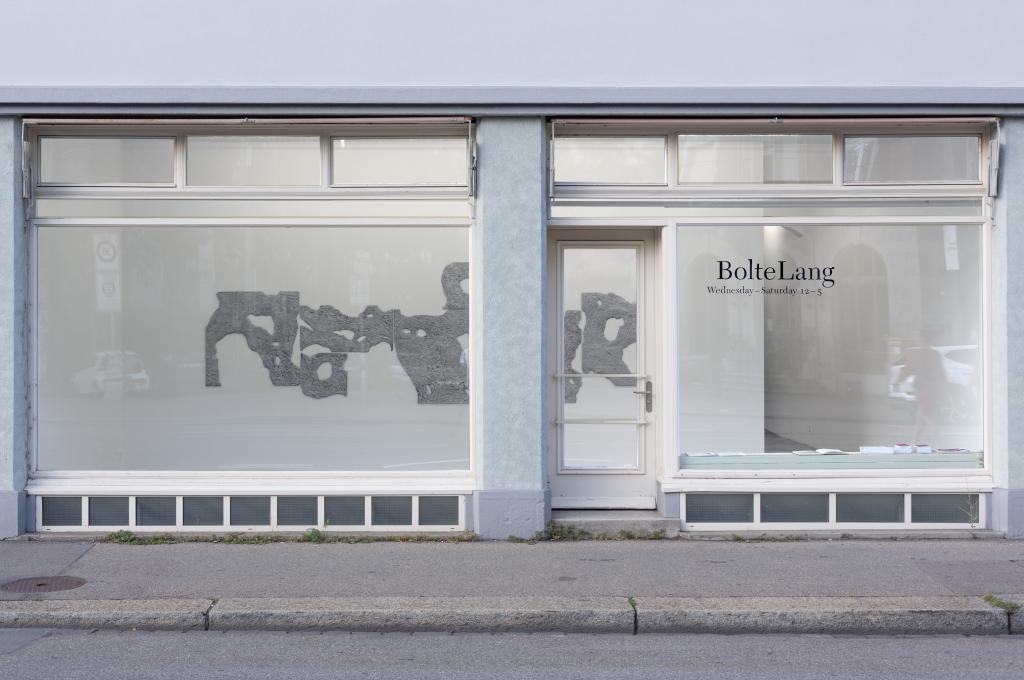Grafted Land
Alexandra Navratil
26th August – 7th October 2017
Opening 25th August, 6 – 9 pm
There is a moment in life when one recognises one’s body as one’s own, when one recognises oneself as an individual. This moment is called the Spiegel-stadium in certain theories of psychology. Currently we are experiencing a moment of hyper-connectivity to our surroundings, to far away places, to each other. We have tools to manage and interact in the social field, the means to create images of ourselves, machines that communicate with each other with incredible speed and density; and new information to consume from all over the globe.
While typing these sentences I am sitting with my family in an inn near Yosemite Valley and a forest fire is raging a mere hour away by car, near a city called Mariposa. The ash darkens the sky; the sun burns a perfectly round red circle into the clouds. We do not have any cell phone coverage and the Wi-Fi works only between 7 and 9 AM for unknown reasons. The clerk at the office informed us about the current situation and any possible proceedings. He showed me the line where the last fire stopped four years ago: just meters behind the Inn. The road down from the mountains offers vista points with breathtaking views of ash-ridden skies, blue horizons below the clouds, and a scarred panorama from the last catastrophe.
At some point in human history a curious mind observed how different trees merged where their trunks touched accidentally. And that curious mind put that knowledge to use and eventually came up with grafting, the technique of combining the living tissue of two alien plants. It is a rather visually unprepossessing, though economically welcome, technique in farming and gardening: grafted plants are easily identified by the scarred seam between rootstock and scion. There are many reasons to do so: to increase the production of a fruit, to collect more than one sort of fruit from one plant or to protect the scion from illnesses, parasites, or weather. Grafting is one of many ways to exercise control and adapt the environment to our needs.
Forest fires, floods, blizzards, tornadoes: it is during and after such events which we call natural disasters, that we become aware of the seams between the “wild” environment and ourselves, the “civilised” humanity. We have carved paths for our needs through rocks and shaped the landscape to our desire; and whatever nature we leave untouched continues to grow around our infrastructure. In everyday life we tend to rely on the safety of the civilised landscape and get annoyed by late public transport or by not being able to share our food on social media, forgetting the dependency of such services on natural factors. This is not a problem of being detached; it is just that we tend to forget that we constantly grow together with our surroundings. Even the digital ones.
Mateo Chacon-Pino
Alexandra Navratil was born 1978 in Zurich, Switzerland. She lives and works in Amsterdam, The Netherlands and Switzerland. She teaches at the Art Institute in Basel. In 2013 she won the Manor Art Prize Canton Zurich. She will be artist-in-residence at the EYE Fimmuseum Archives in Amsterdam from September 2017 onwards.
Recent exhibitions include Alexandra Navratil / Rachel de Joode – Materialgeschichte(n), curated by Nadine Wietlisbach, Photoforum Pasquart, Biel, Switzerland (2017), 4.543 billion. The matter of matter., groupshow curated by Latitudes, CAPC Musée d’art contemporain de Bordeaux (2017), The Conversational Cosmos, group show curated by Laura McLean, West Space, Melbourne, Australia (2017), The Museum of Rhythm, group show curated by Natasha Ginwala and Daniel Muzyczuk, Muzeum Sztuki Lodz, Poland (2016), The Night Side, solo show, Dan Gunn, Berlin, Germany (2016), Silbersee, solo show curated by Inga Bruvere, Latvian Centre of Contemporary Art, Riga, Latvia (2016), Black Hole Hunters, Alexandra Navratil and Susanne M. Winterling, curated by Övul Ö. Durmusoglu, Kunstverein Langenhagen, Germany (2016), Spending Quality Time With My Quantified Self, curated by Niekolaas Lekkerkerk and Jesse van Oosten, TENT, Rotterdam, The Netherlands (2016)
With the kind support of

